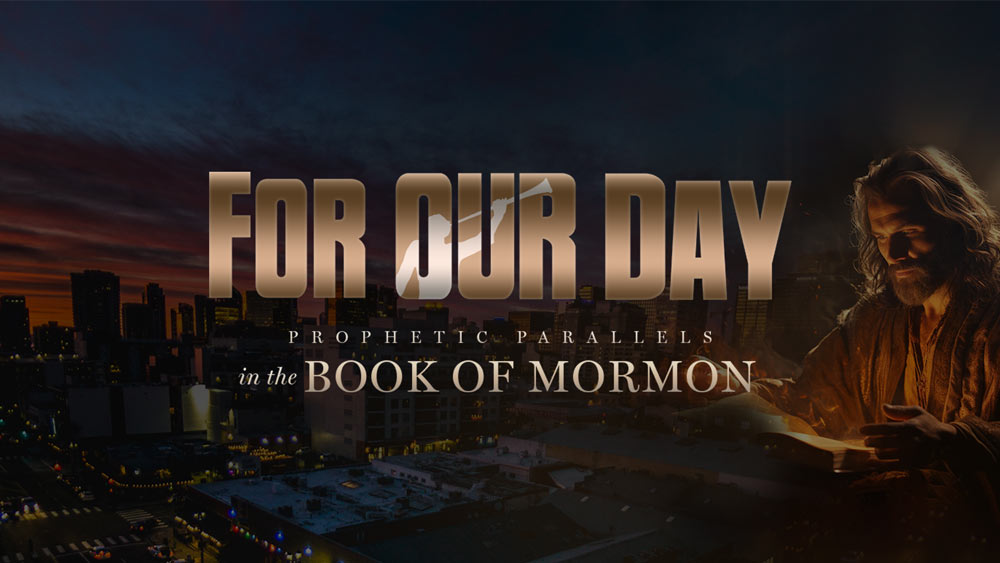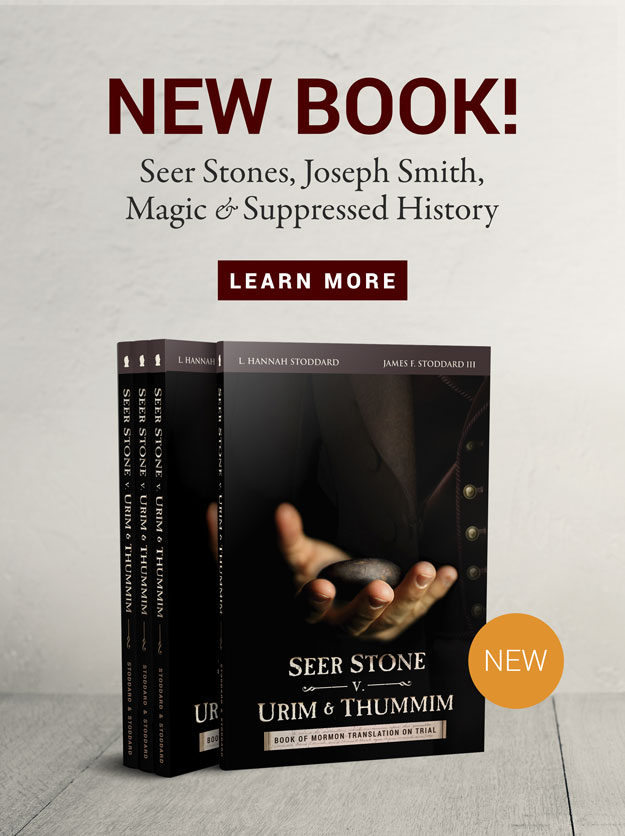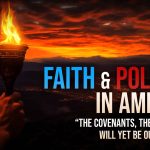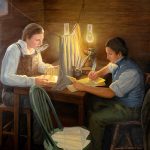Joseph Fielding Smith Account from Essentials in Church History
A Shocking Crime
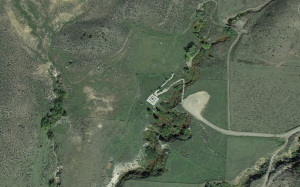
While Captain Van Vliet was interviewing President Brigham Young, there was occurring in the southwest corner of Utah—about three hundred miles from Salt Lake City—the most horrible and shocking crime ever perpetrated within the borders of the state. It was the massacre at Mountain Meadows of a company of emigrants who were journeying to southern California. This bloody and diabolical deed commenced at dawn, September 7, 1857, and continued until the 11th, when the besieged emigrants who survived the attacks, under promise of protection were foully murdered.
It was the deed of enraged Indians aided by a number of white men, who took vengeance into their hands for wrongs committed by a few of the emigrants who were pronounced enemies of both whites and Indians.
It was a crime for which there can be no apology or excuse, a thing treacherous and damnable in the extreme. But for the “Mormon” people it was most unfortunate that it should happen at this particular time. There were circulating throughout the nation many evil reports concerning the Latter-day Saints. All manner of crimes and murders occurring within a thousand miles of Utah, were charged against them. Even the executive of the nation and other high officials were countenancing these reports and aiding in their circulation. The army was on the plains making its way to Utah to suppress alleged violation of law and rebellion; and now, to add to the horror of the situation, the report went forth that the “Mormons” had attacked and killed a party of innocent people peacefully passing through their land. Thus color was given to the falsehood that life and property of “Gentiles” were unsafe within the Territory of Utah. fn
It may as well be understood at the outset that this horrible crime so often and so persistently charged upon the “Mormon” Church and its leaders, was the crime of an individual, the crime of a fanatic of the worst stamp, one who was a member of the “Mormon” Church, but of who intentions the Church knew nothing, and whose bloody acts, the members of the Church, high and low, regard with as much abhorrence as any out of the Church. Indeed, the blow fell upon the brotherhood with threefold force and damage. There was the cruelty of it, which wrung their hearts; and there was the strength it lent their enemies further to malign and molest them. The “Mormons” denounce the Mountain Meadows Massacre, and every act connected therewith, as earnestly and honestly as any in the outside world. This is abundantly proved and may be accepted as a historical fact. 1
It may be said without fear of successful contradiction, that there was less crime committed in Utah during the days of pioneer life than in any other similarly situated section of the country. California had her vigilantes who executed judgment with swift vengeance, without legal trial. Such was also the condition in other border states and territories, and woe to the individual who incurred the wrath of the powers who controlled. The “Mormon” people had been taught from the beginning: “Thou shalt not kill.” Murder, according to their teaching, committed wantonly, was a sin for which there was no forgiveness in this life, neither in the life to come. Next, and like unto it stood sexual immorality. Both of these great sins were denounced by the Saints most emphatically.2
Crimes Falsely Charged to the Church Authorities
One thing most trying to the members of the Church was the attempt by their enemies to charge Brigham Young and the leaders of the Church with every wrong committed in the western country. These attempts led Jacob Forney, Indian Agent in 1859, to write to Washington saying:
“I fear, and I regret to say it, that with certain parties here there is a greater anxiety to connect Brigham Young and other Church dignitaries with every criminal offense than diligent endeavor to punish the actual perpetrators of the crime.”3
How the Massacre Occurred
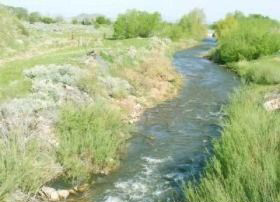
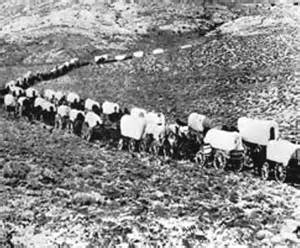
About the time the news arrived in Salt Lake City of the coming of an army, there was passing through the city under command of Captain Fancher, a company of emigrants from Arkansas and Missouri. This company consisted of about thirty families, numbering one hundred and thirty-seven persons. The Arkansas emigrants appeared to be respectable and well-to-do. With them there traveled a rough and reckless company calling themselves “Missouri Wild Cats,” who conducted themselves in keeping with the name. This company was advised by Elder Charles C. Rich, one of the leaders of the Church, to take the northern route. Had they done so they would have saved their lives. They went as far as Bear River and then returned deciding to journey to the south. On their way, it is alleged, the rougher elements of the party abused the people of the southern settlements through which they passed. They tore down fences, destroyed property, insulted women, and otherwise made themselves obnoxious. It is said, on reliable authority, that at Fillmore they threatened to destroy the town, “and boasted of their participation in the murders and other outrages that were inflicted upon the ‘Mormons’ in Missouri and Illinois.” At Corn Creek, fifteen miles farther to the south, it was reported that they poisoned the springs and also the body of an ox that had died. The carcass was eaten by a band of Piute Indians and ten of their number died. Some of the cattle of the settlers died from drinking of the poisoned springs. As the cattle were fat, the owners “tried them out” for the tallow, and a number of white persons were poisoned from the handling of the meat. These “Wild Cats” expressed their pleasure at the coming of the army, and threatened to stop at some convenient place and leave their women and children, and return to assist the troops in killing every “Mormon” there was in the mountains.
Just to what extent credence can be placed in these charges cannot be determined. The fact remains, however, that they gave expression to their hatred of the “Mormon” people, made many threats, and abused the Indians along their way.4
The Purchase of Supplies
It has been said that these emigrants could not purchase supplies in Salt Lake City and the other settlements of the Saints, and had been ordered away from Salt Lake City by President Young. This is not the fact. President Young did not know they were in the city and first heard of them after they had departed. Along the way they did obtain supplies as they desired and as the Saints were able to impart to them, as there is abundant evidence to show. They were well treated by most of the settlers, and not until their own actions brought upon them the ill will of the southern settlements was this attitude changed.5
Word Sent to Brigham Young
So intense did the feeling become on the part of both the Indians and the white population in the southern settlements that it was deemed necessary to send a messenger to Governor Brigham Young to know what should be done. Some of the people expressed the feeling that since the emigrants had declared themselves as enemies they should be treated as such, but the more sober minded maintained that they should be permitted to continue their journey to the coast unmolested. James H. Haslam carried a message from Colonel Isaac C. Haight, of the militia, to Salt Lake City to obtain advice of Governor Young. In the meantime it was agreed that every effort should be made to pacify the Indians and prevent them from making an attack. Haslam left Cedar City in the afternoon of Monday, September 7, and made all haste on horseback, arriving in Salt Lake City on the morning of the 10th. He immediately delivered his message, and Governor Young asked him if he could undertake the return journey without delay. He said he could. “Go with all speed, spare no horse flesh. The emigrants must not be meddled with, if it takes all Iron County to prevent it. They must go free and unmolested.” This was the answer he received. Haslam, although he had just finished a hard journey, immediately returned arriving in Cedar City on the 13th with a written message from Governor Young to Colonel Haight.6
The Answer Arrives Too Late
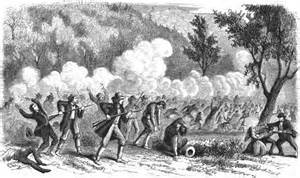
The message to Colonel Haight of the militia from Governor Young was as follows:
“In regard to the emigration trains passing through our settlements, we must not interfere with them until they are first notified to keep away. You must not meddle with them. There are no other trains that I know of. If those who are there will leave, let them go in peace.
Colonel Isaac C. Haight read the letter, and shedding tears replied: “Too late, too late!” The morning (September 7) Haslam left to obtain word from Governor Young, the work of death among the unfortunate victims had commenced.7
The Attack upon the Emigrant Train
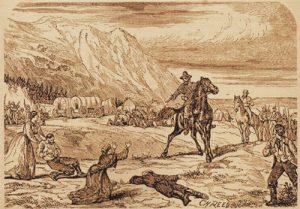
Early in September the emigrant train of the Arkansas and Missouri companies camped in the little valley known as the Mountain Meadows. There they contemplated remaining for several days. In the meantime their conduct had aroused the Indian tribes who now surrounded their camp in hostile attitude. As near as can be ascertained, on the morning of the 7th of September at the break of day, the attack upon the emigrants began. At the first volley seven men were killed and sixteen were wounded. The victims were taken unawares, but being well armed, fought bravely for their lives and were successful in repelling the attack. Several Indians were killed including two of their chiefs. The Indians sent runners throughout the surrounding country calling for reinforcements from among their tribes, and for John D. Lee, who had been in close touch with Indian affairs as their farmer, to come and lead them to victory. Lee hurried to the scene from his home in Harmony, and seemed to partake of the frenzy of the red men. Later, other white men appeared upon the scene, having been lured to the meadows, with the request that their services were needed in burying the dead. Some of them remained, willingly or by coercion, to participate in the massacre which followed.8
The Surrender
Treachery of Their Captors.—During the lull following the first attack, the emigrants formed their wagons in a ring and threw up breastworks for their protection, awaiting the onslaught which they knew was sure to come. Some time was spent by the Indians and their white allies discussing the fate of the unfortunate emigrants. The victims discovered that white men were in league with the Indians, and this knowledge sealed their fate. It was determined by those making the attack that no emigrant should live who could tell the tale.
On the morning of Friday the 11th, Lee induced the emigrants to surrender under promise of protection and conveyance to a place of safety. They were led to a place where the Indians were in ambush, and at a given signal a volley of shots rang out, both Indians and white men participating in the outrage. Seventeen children of tender years—ranging in age from a few months to seven years—were all that were spared. These children were cared for by the settlers until the government by act of Congress returned them to their friends in Arkansas.9
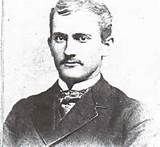
A Bloody Oath
The white men who were engaged in this horrible slaughter entered into a league, by a strong and binding oath, that they would never reveal the part they played in this gruesome tragedy. A false report was forwarded to Governor Young. Lee also reported in person, laying the blame solely to the Indians. Governor Young wept bitterly and was horrified at the recital of the tale.10
The Execution of Lee
For several years the facts relating to the tragedy were unknown, but gradually the truth leaked out and an investigation was made of the affair. John D. Lee was excommunicated from the Church with the injunction from President Young that under no circumstances should he ever be admitted as a member again. Action was also taken against others as the truth became known. In later years Lee was convicted of the crime and paid the penalty with his life. His execution took place on the site of the horrid scene. Others who were implicated fled from the territory and died fugitives. While they thus evaded the justice which earthly tribunals might inflict, they still await the trial for their crimes before a Higher Court where justice never fails.
Involvement of President Young
President Wilford Woodruff defended President Brigham Young during a General Conference in 1894. He remembered:
“Men have tried to lay that [the Mountain Meadows Massacre] to President Young. I was with President Young when the massacre was first reported to him. President Young was perfectly horrified at the recital of it, and wept over it. He asked: “Was there any white man had anything to do with that?” The reply was No; and by the representations then made to him he was misinformed concerning the whole transaction. I will say here, and call heaven and earth to witness, that President Young, during his whole life, never was the author of the shedding of the blood of any of the human family; and when the books are opened in the day of judgment these things will be proven to heaven and earth.” 11
For more information and a new, fresh perspective on the Mountain Meadow’s Massacre, read the article, “If Thine Eye Offend Thee” (Part 1 – Blind Obedience? – To Question or Not to Question? That is the Question!)
- Bancroft’s “History of Utah,” p. 544
- Joseph Fielding Smith, Essentials in Church History [Salt Lake City: Deseret Book Co., 1950], 418.
- Ibid. pg. 419
- Ibid. pg. 419-420
- Ibid. pg. 420
- Ibid. pg. 420-421
- Ibid. pg. 421
- Ibid. pg. 421-422
- Ibid. pg. 422
- Ibid. pg. 422
- Delivered by President Wilford Woodruff at the Sixty-fourth Annual General Conference of the Church of Jesus Christ of Latter-day Saints, held in the Tabernacle, Salt Lake City, Sunday Morning, April 8, 1894., recorded in Brian H. Stuy, ed., Collected Discourses, 5 vols. [Burbank, Calif., and Woodland Hills, Ut.: B.H.S. Publishing, 1987-1992], Vol. 4


